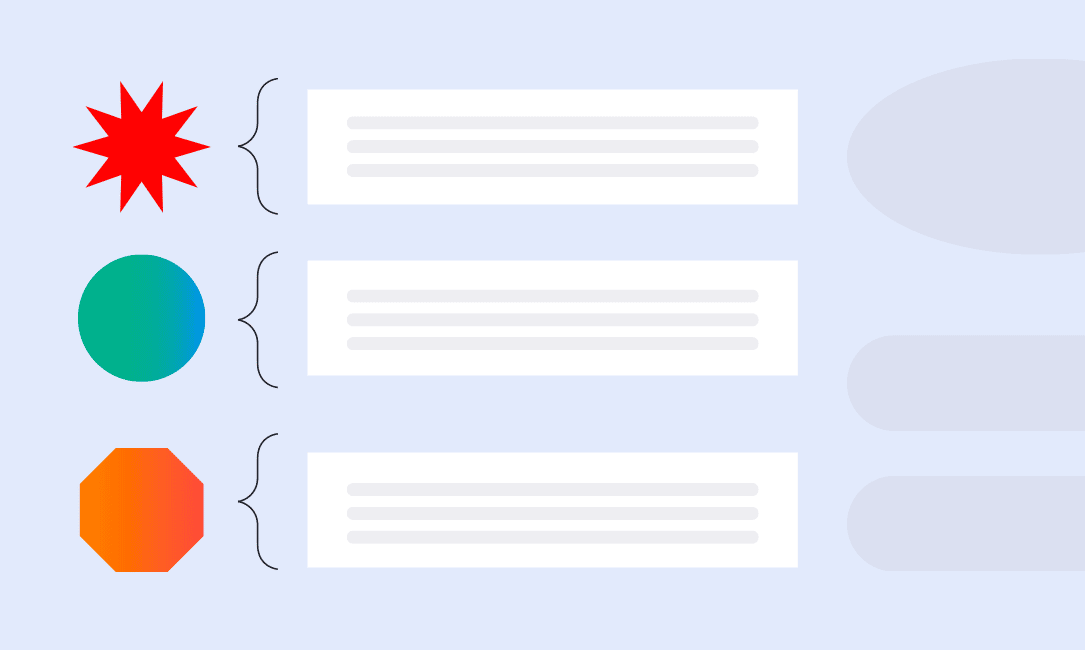In the middle of your company’s knowledge management strategy and need to get people organized? Even though people, content, strategy…and, yes, people make up the four pillars of knowledge management, many leaders skip straight to the strategy conversations and save the team structure conversations for another day.
Like it or not, to make knowledge management come to life, to make knowledge management more than a concept, you need a team. A team that meets, gets work done, and impacts critical metrics organization-wide.
Your KM team should ideally consist of a group of knowledge admins plus other employees—even those not formally trained in knowledge management who have other skill sets and priorities. Knowledge management should be an ROI-positive initiative for virtually everyone involved if you follow a few KM best practices.
In this post, we’ll share a general framework that includes roles and responsibilities to organize employees into a knowledge management team.
Create a knowledge management team structure that can evolve over time
Your knowledge management team structure should start with a few key roles, and expand as needed. Some companies serve knowledge to multiple personas like technology partners, affiliate partners, customers, internal employees—each group requires a different library of knowledge, a library that must be maintained by different people.
The more groups your company must serve, the more complex your knowledge management team. You will need a knowledge manager or knowledge admin to start, regardless of your current knowledge management structure. Your organization may decide to implement KCS methodology once your team is formed; the following roles and responsibilities can be used with the knowledge management framework of your choice.
In this post, we’ll outline a simple knowledge management structure, a couple key administrative roles essential you need. From there, we’ll break down other groups responsible for maintaining and creating all the knowledge that lives inside a knowledge management platform.
Step 1
Define Your Essential Knowledge Management Admin Roles
To set up a basic knowledge team, start with two essential administrator roles: a classically trained knowledge manager and a technical administrator.
Knowledge manager
Obviously important to maintaining whatever knowledge product(s) you deploy, your knowledge manager should set the standards for how information is authored within the knowledge platform. Your knowledge manager should organize everything into a category structure all based on the personas seeking knowledge—whether that person be a product user or one of your employees. This role should also add and remove users from the knowledge platform and set permissions based on what folder or type of content a person needs to access. Many knowledge managers wear multiple hats, but generally responsible for the following items:
- Taxonomy Management — The KM will set up different libraries, create folder structures, and implement a standard for tags and categories
- Context Mapping — Context mapping involves mapping articles or resources that link to one another, plus auditing these resources over time
- Oversight into Publication Workflows: Knowledge managers don’t approve articles, but they do audit how quickly and easily content gets published and updated across the organization.
- Content Standards: This task focuses on consistency. Knowledge managers should apply standards for how to communicate to customers, what terms to use, and how to properly author content based on the audience.
Technical Administrator
Hand in hand with your knowledge manager, a technological administrator should compliment your knowledge manager and handle users, integrations, and configurations. There are a ton of add-ons and optimizations knowledge managers need to stay ahead of the competition; your technical administrator should be your go-to for adding and servicing your knowledge platform over time. Here are a few basic functions a KM technical administrator should serve:
- Access management — Tasks like Single Sign On for newly provisioned users, or granting permissions to the right libraries. Technical admins will ensure anyone accessing knowledge can access the right set of knowledge.
- Managing integrations — Setting up and maintaining custom integrations using APIs/SDKs; the admin should ensure knowledge flows back and forth between connected systems like a pipe, and that these connections fit!
- Product configuration — Your KM technical admin also manages connected products that require access to sets of knowledge, like chatbots, self service portals, and contact center platforms. Each connected product requires a slightly different configuration once connected.
- Data analysis — Your technical admin should also configure reporting that various stakeholders will use to run their own reports. This may involve connecting to a data warehouse, BI tools, or simply configuring the knowledge platform’s native reporting capabilities.
Even these important admin roles do require specialized skills, you should delegate as much content production and upkeep as you can for the additional responsibilities. In this admin layer, your knowledge manager should focus solely on organizing content instead of approving changes. As your organization grows, it will be infeasible for a knowledge manager to not only manage the taxonomy, but write and update content. This is why you need what we’re calling a collaboration team.
Step 2
Set Up Your Collaboration Team
In this next section, we’ll outline an organizational structure for the rest of your knowledge management team—the subject matter experts, contact center supervisors, and trainers. These individuals represent the group any content creator should consult with prior to creating or updating content.
Your collaborators can come from multiple departments, and fall into three distinct groups. As the diagram illustrates, your subject matter experts deal with content review, and thus have the final say.
Library SME(s)
Think of a Library SME as an owner of a knowledge domain—like an HR manager familiar with onboarding procedures, or a product marketer that knows every product feature inside and out.
These experts should collaborate with department heads like a contact center manager or trainer, who need knowledge presented a certain way to an audience.
Contact Center and Customer Support Supervisor(s)
You should also include managers on your collaboration team who focus on improving team metrics. This group will be able to weigh in on knowledge utilization and agent efficiency, how knowledge impacts QA scores, and how information should be presented to customers.
Your subject matter experts should review content for accuracy, supervisors on your support team should ensure writers produce content people actually need—and that this content exists in the most ideal format.
For example, supervisors should collaborate with writers if agents prefer a specific content type—like a decision tree—to make it easier to deliver step-by-step information.
Trainer(s)
Your trainers who work with your new hires (and existing hires) should also serve as collaborators on your knowledge team. If agents receive poor QA scores, your trainers can help identify areas where (a) more coaching is needed or (b) existing knowledge that needs improving.
Simply put: any manager, trainer, or supervisor who has data on agent efficiency and where breakdowns occur, should be on your knowledge team.
Your experts will know what information to include in your knowledge base, supervisors on the front lines will know how to provide it.
Step 3
Define Your Member Roles
Aside from your collaborators and admins, you need a group of knowledge team members who can provide feedback on content or provide a service—like a team of creators.
Content creators
Content creators—those who will create new knowledge articles and revise existing ones as needed—don’t necessarily have to be experts in everything, just great at presenting information.
This person should:
- Know how to use your knowledge management platform’s content authoring tools
- Incorporate feedback from SMEs and other collaborators when needed
- Be familiar with language, grammar, and style guidelines
- Interface with your design team when needed
- Work off of priorities defined by collaborators
Again, delegate tasks on your KM team—let those who produce great written content serve as writers. If your supervisors or trainers have domain expertise (but don’t have the time or expertise to be creators), pair them with writers who specialize in content production.
Your creators should be the ones pressing the ‘publish’ or ‘update’ button after approval, the ones who send out announcements to your agents when new content is available. This group also will incorporate changes requested by agents or customers (and approved by collaborators).
Contact center agents and customers
Last but not least, you should view your contact center agents and customers as members of your knowledge team, even if they don’t have access to your knowledge platform.
Since both agents and customers interact with knowledge most, they will catch typos, they will let you know when knowledge is incomplete; this group should give valuable feedback to your collaborators/content creators.
A modern knowledge management platform like Shelf allows agents AND customers to leave feedback, including:
- Star ratings
- Comments on an articles
- Thumbs up or thumbs down ratings
Feedback is incredibly valuable for any knowledge team, but without a clear process to collect it, comments often get lost in email inboxes (or simply not left at all). Your KM team needs to include members who will leave feedback to improve knowledge over time.
Take the First Step
Knowledge teams can morph into their own unique company entity over time, but start with what you have. A 3-5 person group of admins, collaborators, and members may be all you need to form an initial knowledge team.
It does help to have a classically trained knowledge manager—but anyone can assemble an internal working group to tackle knowledge management, regardless of size.
Set up a knowledge management working group
Once you have a knowledge management team structure defined, it helps to set up one or more knowledge management working groups to tackle key KM projects. You can form groups who focus on content creation, knowledge admin, or simply set up a group sync a few times each month to define action items and assess progress.
No matter your current role, operationalizing a working knowledge management team is a task worth taking on. If you formalize knowledge management, you can positively impact metrics impacted by knowledge, like CSAT, First Contact Resolution, and Average Handle Times.





